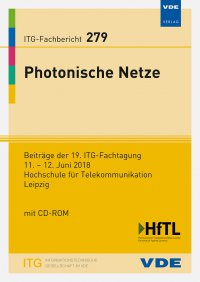Performance Evaluation of Delayed Frame Repetition Variable Data Rate technique for Free Space Optical LEO Downlink (OLEODL) Channel for different Receiver types
Konferenz: Photonische Netze - 19. ITG-Fachtagung
11.06.2018 - 12.06.2018 in Leipzig, Deutschland
Tagungsband: Photonische Netze
Seiten: 7Sprache: EnglischTyp: PDF
Persönliche VDE-Mitglieder erhalten auf diesen Artikel 10% Rabatt
Autoren:
Shrestha, Amita; Giggenbach, Dirk (Deutsches Zentrum für Luft und Raumfahrt e.V., Weßling, Germany)
Hanik, Norbert (Technische Universität München, München, Germany)
Inhalt:
Delayed Frame Repetition (DFR) is a simple and efficient technique for varying the data rate to cope with varying link budget and fading in free space optical LEO downlink (OLEODL) scenario. The system shall run at highest possible data rate in good channel condition and at lower user data rates when the channel gets deteriorated. In OLEODL scenario, the link budget varies according to the elevation. At lower elevations, the signal propagates longer through the atmosphere causing more free-space loss and creating stronger fluctuations by atmospheric turbulence. Therefore, it is efficient to transmit the data at reduced effective rates at lower elevations. Basic idea of DFR is to retransmit frames after certain delay that is larger than the typical fade duration of the channel. In addition to the gain achieved by varying the data rate, this proceeding also provides diversity gain in the scintillation channel. Unlike varying the data rate by varying the pulse length, this technique avoids the need for changing the receiver bandwidth as per the data rate. This paper evaluates the performance of such systems for channel without fading, medium and bad channels using different receivers namely: shot-noise limited (SNL), avalanche photodiode (APD), and thermal limited PIN (Positive-Intrinsic-Negative). For combining the retransmitted frames, Equal Gain Combining (EGC) technique is used. This paper also investigates the variation of the delay length between retransmitted frames. Simulation results show that it is more advantageous to use DFR for channels with higher scintillation index (SI), and use longer delay. With strong scintillation, even a net sensitivity gain in energy-per-bit can be achieved.


